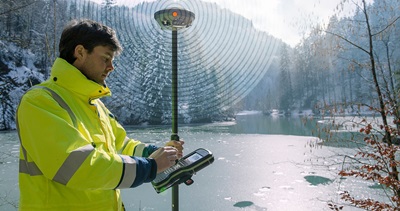AGRICULTURE

GPS/GNSS surveying is the use of GPS and GNSS signals via a GPS/GNSS receiver and antenna to determine the form, boundary, position of objects or points in space relative to other forms, boundaries or points. This replaces traditional optical and mechanical methods of surveying that rely on theodolites and distance measuring equipment that use angular and linear measurements and the application of the principles of geometry and trigonometry.
GPS for surveying can provide centimetre-level accuracy using RTK positioning method, or sub-centimetre levels of accuracy when post processing algorithms are employed.
The survey industry was one of the earliest adopters of GNSS technology. GNSS technology has dramatically increased the speed and productivity of professional surveyors through the use of on demand centimetre level accuracy provided by Real-Time Kinematic (RTK) positioning. NovAtel is the leading supplier of OEM GNSS technology to the survey industry. Our multi-constellation receivers have increased signal availability and the ability to provide excellent performance in the presence of buildings, trees, vehicles and other obstructions surveyors are likely to encounter in their work.
Survey equipment comes in a wide range of form factors including hand held displays, pole mounted and smart systems. NovAtel supplies OEM GNSS receiver cards in a variety of sizes to accommodate the unique needs of a particular manufacturer. Compact, power efficient and rugged for reliable operation in demanding work environments, our OEM receivers are designed to integrate easily into end user survey systems of all kinds. And, as an OEM provider to the survey industry, we will never compete against your own end user equipment
NovAtel also offers a range of GNSS antennas to optimize positioning performance. TerraStar Correction Services with RTK provide reliable, centimetre level accuracy in real world conditions with minimal initialization time. High performance RTK positioning is sustained at extended baseline lengths and accuracy is optimized when working in high multipath and signal shaded environments.
Network Transport of RTCM via Internet Protocol (NTRIP) is an application level protocol used to stream GNSS differential correction data over the Internet.
OEM board level and board + enclosure GNSS receiver options.